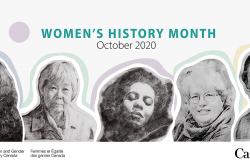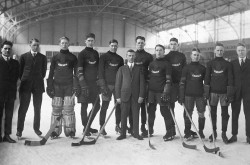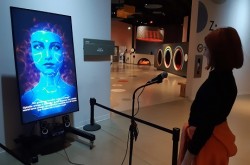Virtual reality brings the farm life experience to students worldwide

Field trip planning just got a whole lot easier.
Thanks to the power of virtual reality, teachers based anywhere in the world can now take their students on an educational tour of the dairy barn at the Canada Agriculture and Food Museum — which is also a working farm in Ottawa, Canada.
The museum has partnered with Google Arts & Culture to develop “Explore a Dairy Farm,” a virtual reality (VR) expedition available through the Google Expeditions app.
Nadine Dagenais Dessaint, who works as an education, interpretation, and exhibition officer for the museum, explains that the virtual tour offers users exclusive access to rarely-seen areas of the farm, which is located on a national heritage site.
“In this tour, you get to go into rooms where visitors are not normally allowed,” she says. “For security reasons, our visitors can’t physically visit the hayloft, and most of the time it’s filled with hay. It happened that when Google shot the photos for the tour, it was half empty — so you can really see the architecture of that beautiful building.”
Dagenais Dessaint adds that the content of the tour is also unlike a physical trip to the museum.
“Most groups that come to the Canada Agriculture and Food Museum don’t necessarily do a dairy tour,” she says. “This is a very personal tour; you’re following a herdsperson through their day of work, learning about life as a dairy farmer and how they care for calves and cows. You start the tour outside and look at the barn, the barnyard, and the tractors. Then you explore different parts of the barn; you see the maternity unit where cows give birth, the feed room where rations are prepared, and the dairy barn where the cows are milked twice each day.”
Anna Szoc, a coordinator with the Google Cultural Institute, says the tour of the Canada Agriculture and Food Museum will open up new possibilities for educators in Canada and beyond.
“In Canada, a class could see it using virtual reality first and then decide to come in person,” says Szoc. “This tool also makes it possible for a teacher in France to show the museum to their class; the museum can be seen and visited by people who will never have an opportunity to come to Canada.”
Szoc adds that the tour was created using 3D photography, and is designed to be viewed using a smartphone within a Google Cardboard viewer.
“The viewer is simple and accessible — they are inexpensive and readily available for purchase, or you can find online tutorials to make your own,” says Szoc. “The viewer has lenses inside; you put in a smartphone and you’re ready to go.”
The tour can also be viewed with a smartphone or tablet without using Google Cardboard. There are nine slides — or panoramas — with each one offering between three and five points of interest.
“If it’s an expedition with a teacher, then the teacher has a tablet and controls where the pupils are and what they’re looking at,” explains Szoc.
The museum has also prepared several streams of questions that teachers can pose to their students about the tour, which are age-appropriate for different grade levels and linked to the provincial and territorial educational curricula.
A narrated audio file is also available for users who want to take a solo trip.
Szoc says that the expedition tour of the Canada Agriculture and Food Museum is just one of the many expeditions Google Arts & Culture is making available.
“We have a lot of very interesting places that are hard to get to — like a coral reef, the Taj Mahal,” she says. “Now even people with limited mobility will be able to see some of the most incredible, hard-to-access locations around the world.”
Ready to “Explore a Dairy Farm” at the Canada Agriculture and Food Museum? Just follow these steps:
1) Download the Google Expeditions app for iOS or Android.
2) Launch Google Expeditions, then search for: Explore a Dairy Farm.
3) Download the tour — it is now added to your library!
4) View with or without a VR viewer.




































































